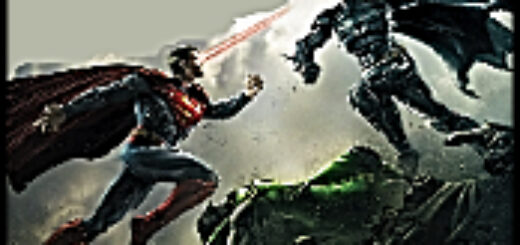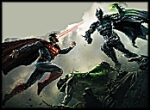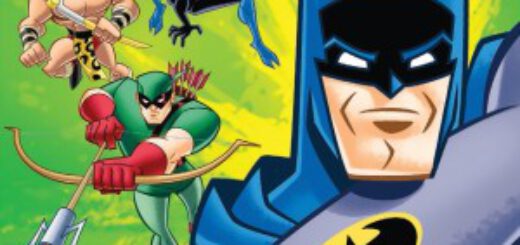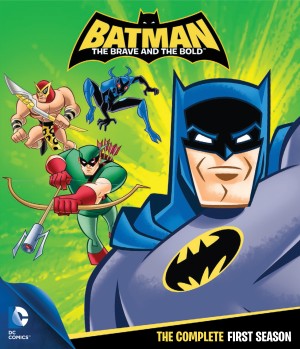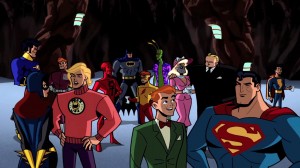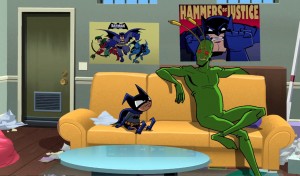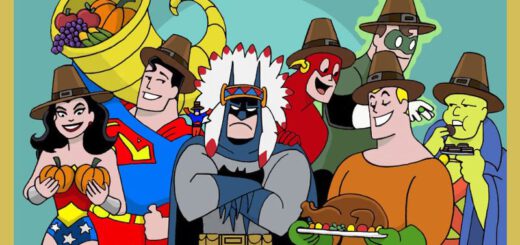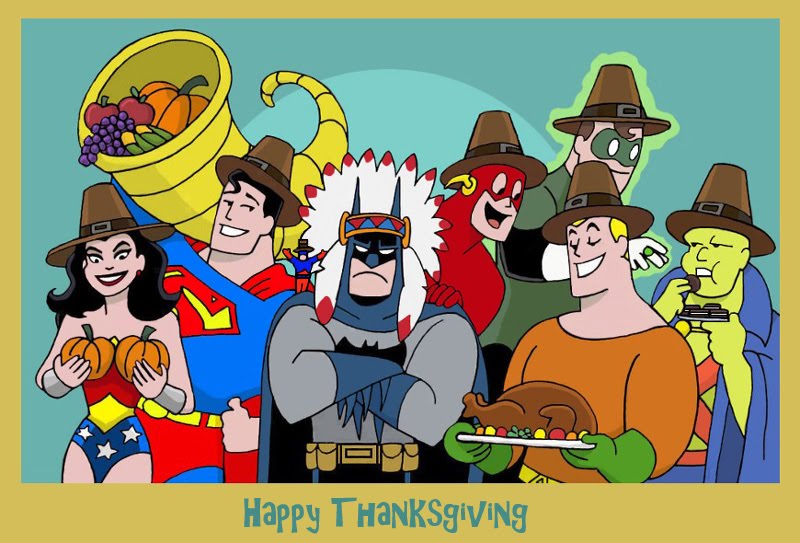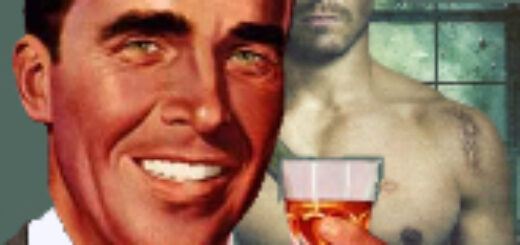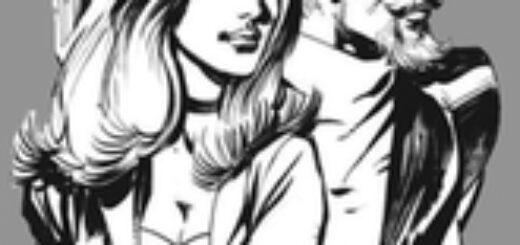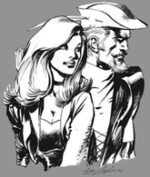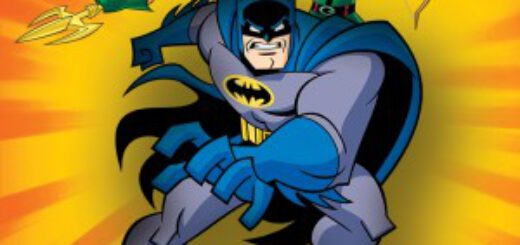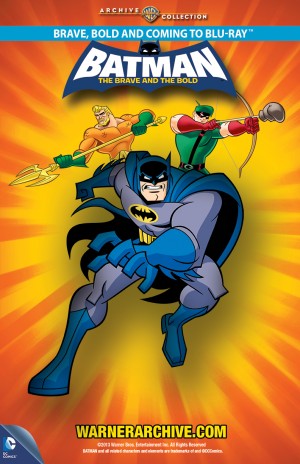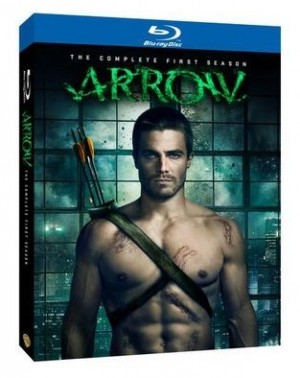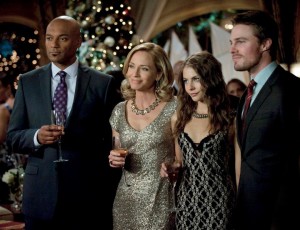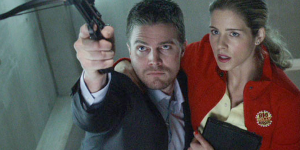BOB INGERSOLL: THE LAW IS A ASS #304 GREEN ARROW MAKES HIS POINT– RIGHT BETWEEN THE EYES
 Repeat after me, as I repeat for the I don’t know how manyth time: Murder is bad for children and other living things.
Repeat after me, as I repeat for the I don’t know how manyth time: Murder is bad for children and other living things.
Murderers are also bad.
So you can just imagine how I feel about murderers who murder.
Which brings us to the conclusion of Justice League: Cry for Justice. In issue 7 of said mini-series, the super-villain Prometheus– actually the second of three super-villains to use that name in the DC Universe, don’t ask – has been cornered by the JLA. He told them that he has hidden devices in Star City and the other home cities of the other JLA members which will teleport those cities through time and space. But he promised to tell the heroes where the devices were hidden, if they let him escape.
Green Arrow refused to negotiate, so Prometheus activated the devices; the one in Star City first. The device in Star City goes off first. Unfortunately, it malfunctioned and didn’t teleport Star City. Instead it demolished much of the city and killed ninety thousand people. While the other devices were about do the same to the other heroes’ home cities. At this point, Green Arrow relented and the JLA agreed to let Prometheus go in return for him telling them where the devices are and how to deactivate them.
Now in my day, if you’ll allow me a slight digression into Cranky-Old-Man mode, the heroes wouldn’t have agreed to Prometheus’ demands. They would have apprehended him and figured out a way to keep his devices from doing any damage at all. That’s why we called them “heroes,” they were that good.
But nowadays, in a comics world which has been thoroughly corrupted by the excesses of the destruction porn which continues to generate big box office through the oeuvre of directors Michael Bay, Roland Emmerich, Zack Snyder, and anyone else who thinks computer graphics should be used in place of things such as story, plot, or characterization, the heroes can’t be heroes. They had to stand by helplessly and watch the destruction porn destruction of Star City and let Prometheus go. Okay, they did stop the other devices. But not before Star City was partially destroyed and ninety thousand people died. And not before they let Prometheus get away.
Let Prometheus get away, that is, until the final page of Justice League: Cry for Justice # 7. That’s when Green Arrow tracked Prometheus down, put an arrow through his eye – How Werthamesque – and said, “Justice.”
Green Arrow didn’t act as a hero, he acted as an executioner. He acted expediently. And, as Tony Isabella has said, “expedience isn’t heroism.”
A quick aside: I was amused by the description of this scene in Wikipedia’s entry on Prometheus, that the villain is “apparently killed by Green Arrow,” because, let’s face it, this is a DC Comics story, where death has about as much meaning as a Kim Kardashian’s wedding vows.
Cut to some days in the future when, in Green Arrow and Black Canary # 32, Green Arrow acknowledged that he crossed a line and turned himself into the police. A speedy trial followed later that same issue. I said it was speedy, didn’t I? I just didn’t realize that it would be speedier than Speedy Alka-Seltzer and Speedy Gonzales combined. It wasn’t much of a trial, given that Green Arrow freely admitted his act and, the trial moved speedily to the verdict.
Where the jury found Green Arrow not guilty.
Did I say, “not guilty?” Well, no, I didn’t. The foreman of the jury said that. Yes, even though Green Arrow freely admitted his guilt in open court, the jury found him not guilty.
It’s called jury nullification and it happens from time to time in the criminal justice system, or, if you want to believe the trials that David E. Kelley used to show us in The Practice, it happens nearly every freaking week.
Jury nullification happens when the jury is aware that the defendant violated the law, but, for some reason, sides with the defendant and doesn’t want to convict. In this particular trial, it was probably because Green Arrow did what the jurors wished they could have done, brought ultimate justice – read vengeance – to Prometheus for the ninety thousand Star Citizens who he killed. The jury liked what Green Arrow did, even if it was against the law, so it found him not guilty.
They judge presiding over the trial wasn’t as forgiving as the jury. He decided that the verdict notwithstanding, Green Arrow deserved to be punished. So the judge ordered Green Arrow exiled from Star City.
Hey, Your Honor, what was so difficult to understand about the words “Not guilty.” It couldn’t have been the “guilty” part, you judges hear that word all the time. It must have been the word, “not.” That’s the one you’re not familiar with.
So let me explain it to you. “Not guilty” means Green Arrow wasn’t convicted. He has to be set free. It also means the Constitution of the United States forbids you from punishing him.
Look it up, it’s in the Fourteenth Amendment. You know the one that says you can’t deprive a person of “life, liberty, or property, without due process of law.” It’s the one that says, if a person is found not guilty by a jury of his peers, you can’t punish him anyway.
Oh, it’s also in the Eight Amendment, the one that forbids cruel and unusual punishment. You know like punishing a person who was found not guilty by exiling him.
And, for good measure, it’s also part of the Privileges and Immunities Clause of the United States Constitution, which the Supreme Court held gives citizens the right to freedom of movement as far back as 1823 in Paul v. Virginia, when the Court wrote that the Privileges and Immunity Clause gives citizens “ the right of free ingress into other States, and egress from them.” So under this provision, Your Honor, you couldn’t have barred Green Arrow from traveling in your state or city without due process. Maybe, if he had been found guilty, you could have. But he wasn’t, so you can’t.
Am I getting through to you?
I mean, justice is supposed to be blind, not brain dead.





